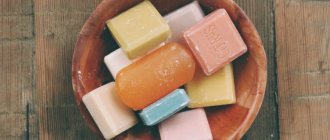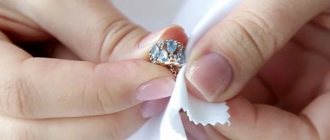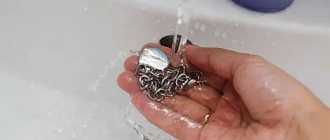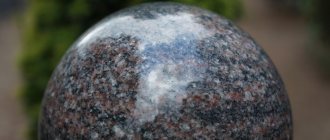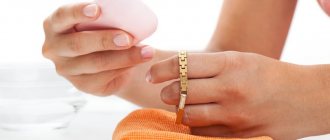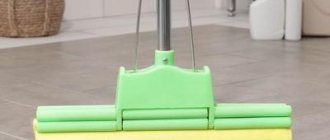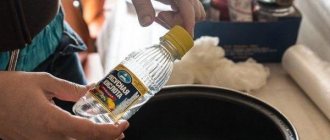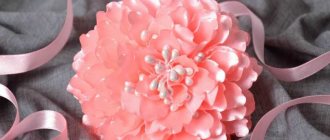I think every pastry chef has encountered mastic at least once. You may have worked with this material: covering a cake with fondant, creating figures or decorative elements. From the outside it always seems that working with mastic is easy, but in practice it causes minor difficulties. And today I will tell you how to avoid these difficulties.
Decorative elements made from mastic are again being used to create confectionery masterpieces. Mastic allows you to create an individual, unique dessert. The advantage of using mastic is that the decor made from it is suitable for decorating cupcakes and cakes, for creating children's desserts or for adults. Thanks to mastic we can create absolutely any decor.
Mastic - sweet confectionery plasticine
Mastic is an elastic confectionery material made from powdered sugar, reminiscent of plasticine; various figures, flowers, reliefs, three-dimensional inscriptions, plot compositions are sculpted from it, or the cake is completely covered with it. To prepare mastic, you can use special tools - rolling machines, scrapers, stencils, molds and curly knives. If there is no pastry equipment, use a regular board, rolling pin, knife, cling film and cookie cutters. Mastic is tinted with natural or artificial food colors, but this is done at the initial stage of preparation - when mixing the ingredients. To reduce the sugariness (after all, a lot of powdered sugar is used), lemon juice is sometimes added to the mixture.
What does a novice master need to have?
In order to create figures and decorations from mastic with your own hands, of course, you need to have the appropriate confectionery equipment. These are special kits, which are sometimes accompanied by a brochure describing what a particular tool is needed for.
To create petals and leaves, cuttings are necessary. They can be metal or plastic.
To create a certain texture, for example, natural lines of petals and leaves, so-called weiners are used. They are not cheap, but with their help your creations will become perfect and simply irresistible.
For convenient work, it would be nice to have a silicone mat and rolling pin. And, of course, a novice cake decorator always needs to keep the appropriate educational book at hand, where it would be shown in great detail why this or that tool or cutting is needed, how to use them to create a rose or violet, an orchid or a lily.
Types of mastic and the subtleties of its preparation
The viscosity of the material is given by starch, gelatin, condensed milk, chocolate, marzipan, honey, marshmallows and marshmallows. In accordance with this, there are different types of mastic - gelatin (pastillage), marshmallow, milk, sugar and honey. Pastilage hardens quickly, but remains elastic, so it makes spectacular flowers. Honey mastic is very soft and pleasant to sculpt, just like milk mastic - it has a very beautiful snow-white color and a pleasant texture. Some confectioners add a little oil to the mastic to make it more plastic.
Preparing mastic is not very difficult - all the ingredients are thoroughly mixed, and sometimes heated in a water bath, if this is specified in the recipe. If necessary, add a little more powdered sugar, which acts as flour when kneading the dough. The board and rolling pin are usually sprinkled with starch so that the mastic does not stick, and the finished confectionery “plasticine” is stored in cling film. And an important point - decorating cakes with mastic usually begins when the top layer of cream has hardened.
How to choose material
They have special chocolate for modeling. It should be without filling, nuts, jam. To sculpt figures, buy a high-quality product that contains only natural ingredients. Otherwise, the material will not melt well, and the model plasticine will turn out hard and layered.
No matter what color the purchased treat is, white and milk chocolate will come in handy. Figures made from Belgian dark chocolate look great. Decorative toys are painted in the most unusual colors when they want to surprise guests.
Remember, the higher the percentage of cocoa in the product, the easier it melts. The most suitable varieties on the packaging are marked with numbers from 70% and above.
Making your own mastic
Gelatin mastic is made from 2 tbsp. l. gelatin powder, which is mixed with cold water, and after swelling, the container with gelatin is placed in a water bath for several minutes until it is completely dissolved. Add 450 g of powdered sugar to the gelatin, “knead” the mastic, roll it into a ball, and then wrap it in cling film.
Chocolate mastic is a very tasty and beautiful decoration for a cake. To prepare it, you will need 100 g of dark chocolate, melted in a water bath, and 90 g of marshmallows, which are added to the melted chocolate. First, it is recommended to keep the marshmallows in the microwave for just a few seconds to soften them. In this case, it is necessary to carefully stir the mass all the time so that it does not burn. When the marshmallows are half melted, add 40 ml of cream with 30% fat content, 1 tbsp. l. butter, 1-2 tbsp. l. cognac, mix well and add 90-120 g of powdered sugar. First, knead the mastic with a spoon, and when it becomes thicker, do it with your hands.
Milk mastic is easy to prepare - mix 200 g of condensed milk, 2 tsp. lemon juice and 250 g of powdered sugar. All ingredients are ground to a uniform texture, and then the mastic is rolled out on a board and beautiful figures are cut out of it.
To completely cover the cake, roll out a large round pancake and place it on the cake, making sure that the top and sides are completely covered. The mastic is smoothed out with your hands and the excess is removed, which can be stored in the refrigerator for up to two months. When the mastic hardens, confectioners recommend warming it slightly in the microwave or in a water bath.
Roses
What would a birthday cake be without roses! Do you think that sculpting them is very difficult? But that's not true. We invite you to make them yourself, suitable even for beginners.
Pestle
It is better to make a rose pestle from mastic in advance with your own hands. It should feel firm when you apply the petals to it.
Marbling
To ensure that the roses are not just white, but marble red:
- Add a little red mastic;
- To make red fondant, you need to add red dye;
- In the middle of the white mastic, put the red one (there should not be very much of it, 5-6 petals). Stir until marbling appears.
Modeling
- Roll out a layer of mastic. The thinner you roll, the thinner your rose petals will be;
- Using a glass, cut out circles;
- We begin to apply the petals;
- Take the first circle, rub the edges of half the circle with a tablespoon, do not touch the second;
- We take a leaf and put it on the bud, fasten it;
- Now we take the second one, stitch the next petal with a seam away from us;
- When you make a petal, it should be slightly higher than the previous one;
- First we turn on the right, then on the left. Don’t forget to give the bottom the shape of a bud each time.
Thus we need to make five petals. The more roses you make for the cake, the more beautiful it will be.
Almond marzipan from children's fairy tales
Marzipan, often mentioned in Andersen's fairy tales, is another confectionery "play dough" made from powdered almonds and sweet syrup (or powdered sugar), with sugar making up more than one-third of the mass. Marzipan is a very elastic material from which you can sculpt complex shapes and fairy castles without adhesive additives. Real marzipan is made from almonds; if you add other nuts, the mass will lack plasticity. There is another secret to preparing this product - for 20-50 sweet almond kernels, take 1 bitter nut, which can be bought in specialized confectionery stores. This slight bitterness helps marzipan fully reveal its taste and aroma and gives it a special piquancy. If you can't find bitter almonds, you can replace them with a few drops of almond extract, bitter almond oil or almond liqueur. However, adding these ingredients to decorate the cake is not at all necessary. The absence of bitter notes will not reduce the plasticity of marzipan, it will simply not have that characteristic taste.
Decorating cakes with marzipan
German confectioners know about 200 ways to prepare marzipan. All these methods can be divided into two - hot and cold. With the hot cooking technology, sugar syrup is boiled, which is mixed with almond crumbs, but the plasticity of this mass decreases as it cools, so to cover the cake with marzipan, you need to sculpt decorations as quickly as possible. The cold method is the easiest, since the almond flour is combined with powdered sugar and kneaded well. If the almonds are of poor quality, you won’t get a homogeneous mass, so confectioners in such cases recommend adding an egg to hold the ingredients together. Of course, the egg must be very fresh, and such products cannot be stored for a long time. Various flavorings are added to marzipan - liqueurs, cocoa, orange zest, spices and rose water.
How to decorate a cake with marzipan? First you need to cook it - preferably cold, as it is much easier. To do this, pour 350 g of almonds with hot water for a few minutes to make the skin come off easier. The peeled nuts are lightly dried in the oven, preventing them from changing color, and then ground into flour. Beat 2 eggs, add 175 g of powdered sugar and cook the mixture in a water bath until it reaches the consistency of cream. Remove from heat, add almonds to eggs, add 1 tsp. lemon juice, then thoroughly beat the marzipan. Sprinkle the board with powdered sugar, place the nut mixture on it and knead the almond “dough” until it thickens completely. You can add dyes to marzipan, and then sculpt whatever you want - objects, flowers, animals and architectural structures.
Fondant for cake decoration
Fondant is boiled sugar syrup that is whipped with a mixer and cools, turning into a thick, sticky glaze or brittle and hard fondant. It all depends on the composition of the syrup and the method of its preparation. The syrup can be cooked without additives, in this case we are talking about fudge. If you add milk or cream to it, you get milk or cream fudge. Fudge can be chocolate, fruit and berry, nut, protein, creme brulee - depending on what ingredients are added to it.
For fudge, mix 100 g of very heavy cream, 1 cup of sugar, 40 g of butter and bring the mixture to a boil over low heat, stirring constantly. Boil the fudge until it becomes creamy, and to check its readiness, add a drop of milk mixture into the water. The finished fondant easily rolls into a plastic ball.
Protein fudge is very tasty, for which 2 chilled egg whites are beaten with a pinch of salt until fluffy foam, and then 300 g of powdered sugar and 2 tbsp are gradually added to them. l. lemon juice.
It is better to store the finished fondant in the refrigerator, covering the bowl with cling film to prevent drying out; apply it to the surface of the cake using a pastry brush or a pastry bag.
You can decorate the cake with grilled cake, marshmallows, marmalade, or use a simple stencil and powdered sugar. Involve children in decorating confectionery products - they will certainly enjoy making masterpieces from mastic or marzipan. Decorating cakes together brings you closer together, and sharing tea with delicious desserts turns life into a series of endless pleasures!
Useful tips
Sometimes, even following step-by-step detailed instructions, not everything works out and not always. Every craftswoman has a couple of secrets that help in the sculpting process:
- Sometimes it is quite difficult to cover the entire cake with fondant carefully. There are folds here and there on the sides that spoil the whole look. In this case, you should roll out the mastic in such a way that a sufficiently large reserve is maintained. Next, we place it on the cake and under its weight it should lie as it should;
- It's hard to find black dye. In this case, you can get out of the situation as follows: take three dyes (blue, yellow and red) and mix them in a ratio of 2:1:1. There is also the option of adding blue to brown paint;
- To make the mastic coating shine, it needs to be lubricated with a solution of vodka and honey. To prepare it, you need to mix both ingredients in equal quantities. Using a soft brush, lubricate the surface with the resulting liquid.
Fantasize and, perhaps, you will create your own individual figures from mastic, not like anyone else. Good luck!
